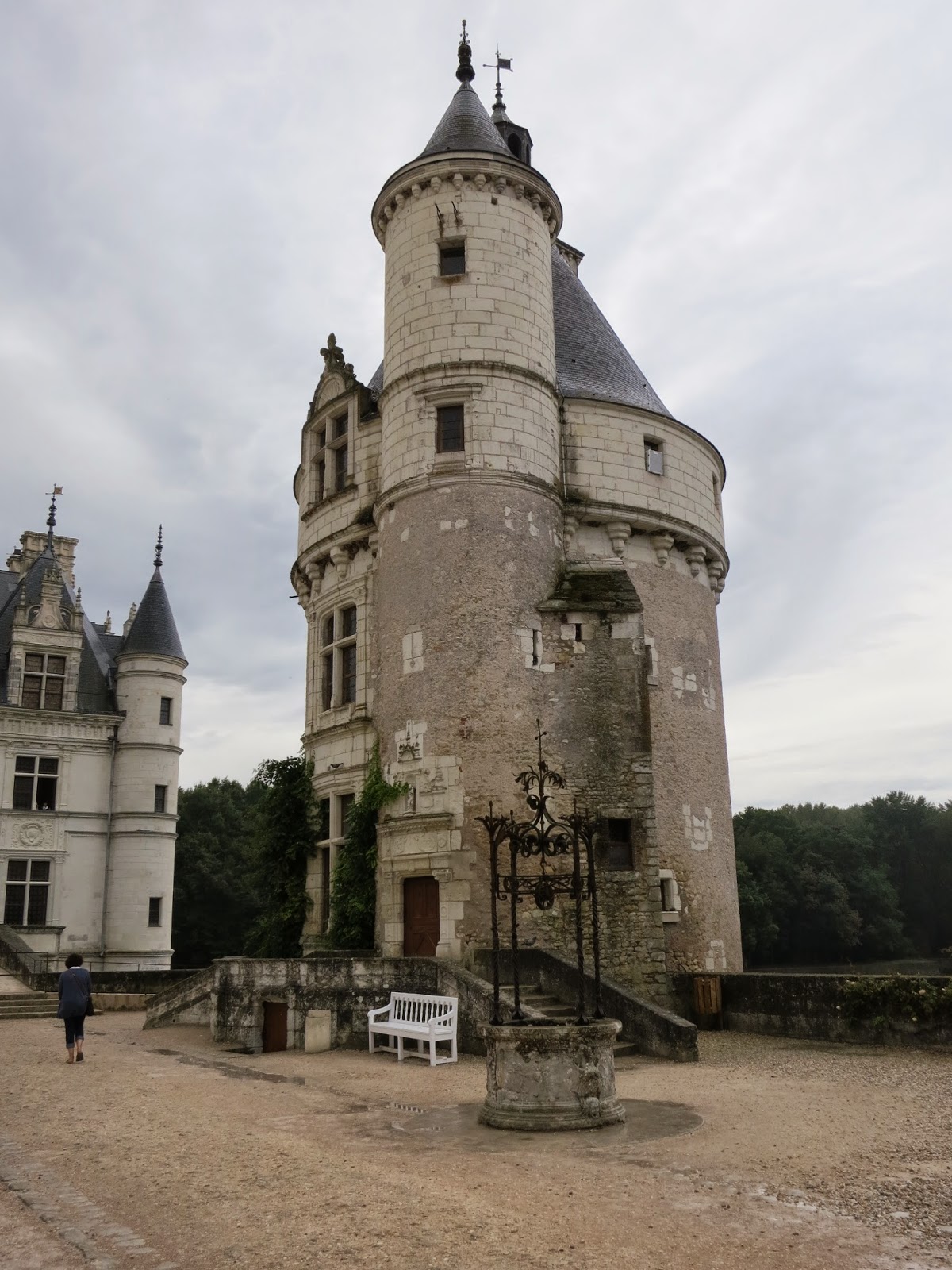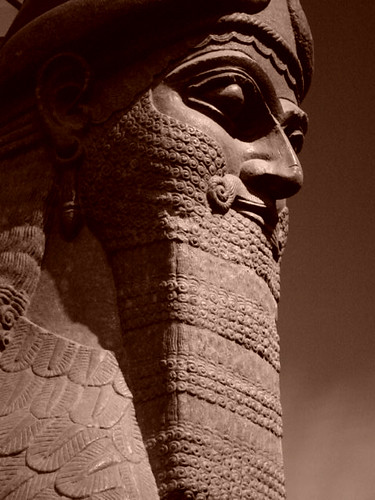The gardens of Chateau Clos Luce are the size of a small park, with interwoven paths marked by full size replicas of the master's great inventions. When we came to the museum, we had no idea how large it really was in entering the house. One glance at the map and we were intrigued enough to see, and it was well worth it.
 |
| Full size Tank, minus the guns, but it DID spin. |
 |
| Full size machine gun, complete with working smoke from the guns. |
 |
| Mom trying the Archimedes screw, it carries water up a spiral. |
There must be dozens of
full scale working models of Da Vinci’s inventions along the paths here. I took a spin in the Tank (its not a real
tank of course) and Mom tried the Archimedes screw. There was a nice vegetable garden, and several
other exhibits including a side museum that housed Da Vinci’s flying
machine. It looks exactly like a plane
for one person. There were also scale
models of Automaton, moving machine-like toys about the size of dogs.
 |
| Lion Automaton |
 |
| Flying machine |
The lion we saw
inside was used at parties, and supposedly along with being painter, sculptor,
inventor, genius, Da Vinci liked to plan parties. He would arrange the whole affair and these “little” things would march around and open up
reveal fantastic gifts like jewels, flowers and other things inside. The rest of the museum had sketches and designs of his various other works. We spent a long time here, admiring it all before meandering back through the garden once more.
 |
| Sketches of dogs? |
On the whole the Close Luce was very much a hands on museum
once you got outside and it was well worth the whole trip just to see it. We spent quite a few hours there before
walking up along the old streets towards the castle grounds. The town of Ambois was very much like
Chartreaux, with narrow streets and little houses hugging the hills. Some places looked like they’d been dug out
of the hillside centuries before and were still lived in.
 |
| Lovely peacocks |
 |
| Little ducks and hens |
 |
| Gorgeous flowers |
I was tired, and really not feeling well, so we stopped in
the shadow of the castle to decide on lunch.
It was here that we found and sampled the only recommendation from among
the many provided by our guides. It was
just pure luck that we stumbled on it honestly.
If we’d gone a different direction away from the castle and back down to
the hotel like we planned, we would have missed the place entirely.
 |
| The Castle and upper town |
 |
| L'epicure Restaurant |
The restaurant is called L’Epicure. It’s a tiny place just along the street, and
as we sat down and rested there I felt right at home. There was a nice breeze a little shade, fresh
water and lemonade. I amused myself
with petting a dog at the next table and glanced over the menu. I can say right now, I am no fan of
eggs. My parents will tell you I loathe
and despise them scrambled, hard boiled, sunnyside, fried, anything. Looking all the other choices, I didn’t want
to go through a full 2 hour lunch service and so I ordered an omelette and
hoped to God I wouldn’t regret it.
 |
| Friendly dogs included. |
Well I didn’t. In
fact, this was the best omelet I had in my life; warm and moist, deliciously
packed with cheese. I devoured that
thing, and I would devour it thirty times over … it was that good. I make this
statement whole heatedly as a person who loathes and despises eggs, that I could eat eggs 3 times a day at that restaurant for the rest of my life. If the eggs weren’t enough, there was an
incredible dessert.
Our meal at L’epicure was miles beyond the comparison to
the dreadful meal at the hotel. Where
we’d paid 80 euros for a terrible meal, we paid less than half for a wonderful
one at L'epicure. This meal in itself was a highlight of the trip, and an exclamation point to a wonderful experience back at Clos Luce. This meal in itself is worth a trip.
 |
| Streets of Rue National |
 |
| Colorful displays at a grocer |
With lunch finished we walked back through the Rue
national, a pedestrian street with lovely shops and stalls. There were all sorts of delicious and
beautiful things here, almost too many to describe. Vines grew up the side of a great old clock
tower in the center of it, and people sat and talked happily from the
cafes. It was an ideal
place, one I would have liked to spend much more time exploring. We finished the day with dinner at a little
bakery there before returning to the hotel to rest.
 |
| A lovely rainbow to end the day. |
As I sat in the room, I reflected on everything that
happened while listening to the bells ringing somewhere nearby. Ambois feels special when in comparison to
Chartres or many of the other towns we visited.
The buildings, large and small, short and tall seem to lean upon each
other like lazy neighbors. Some have
gardens, and others simple gravel. It
feels like a town where generations could grow up beside other generations and
still know someone who knew DaVinci way back when.
All of this guarded by the astounding legacy of Da Vinci
and Francis I.


























































